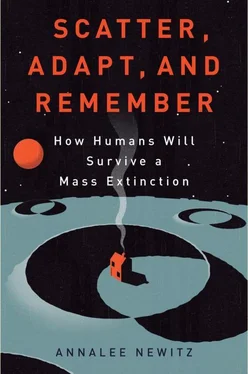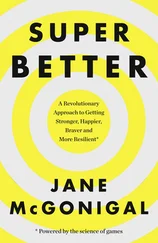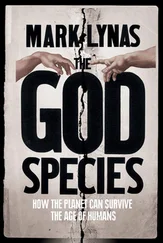The Earth these mammals began to colonize with their strange paws and non-feathered faces had come into being through extremely complex events, whose true impact can only be measured in tens of millions of years. Environments had died and been reborn from the effects of liquid rock deep in the Earth and flaming balls from space; the mixture of gases in the atmosphere had been altered by microbes, mountains, and plants; temperatures had fluctuated between extreme icehouses and greenhouses; and the very shape of the planet’s landmasses and oceans had transformed quite radically dozens of times. If there had been a paleogeologist among the last of the dinosaurs, she could hardly have pinned the blame for her peers’ demise on any single factor. The entire ambiguous history of the planet would have had to stand trial for murdering brachiosaurus and letting a bunch of little monkeys take over.
The dinosaurs who survived
Adding to our paleogeologist dinosaur’s conundrum would be another issue, which is that the dinosaurs didn’t entirely die out. An evolutionary offshoot of therapods—birds—survived into the present to become one of the most successful animal classes on the planet. They are highly diverse, exhibit a wide variety of social behaviors, and undertake some of the most incredible migratory journeys of any creatures we know. Of course their dinosaur forebears are extinct, much the way humans’ forebears are. But the dinosaur evolutionary line appears to have continued unbroken.
Perhaps the single most common misconception about dinosaurs among humans is that these creatures and their world have disappeared. Like mammals, dinosaurs are survivors. But their children, who flash through the skies and leave us in awe, are so different from their ancestors that we find it hard to draw a connection between them. What we should ponder, as we move from geological history into the world where human evolution takes place, is whether our understanding of survival is as clouded as our understanding of dinosaurs.
The dinosaurs survived two mass extinctions, but the crows who like to hang out in the tree next to my house are nothing like those dog-sized dinosaurs who beat out the crurotarsans. In fact, it’s not entirely accurate to say the crurotarsans have been pushed off the environmental stage either. Are we not witnessing a strange tableau of survival whenever a bird alights on the head of a crocodile, bringing together the evolutionary offspring of Triassic and Jurassic? Instead of saying the dinosaurs died out, it might be more accurate to say that dinosaurs changed.
Can humans possibly expect to remain unchanged as we face the next mass extinction? History suggests that it’s unlikely. But if survival means that our species will evolve into creatures like ourselves, but with new abilities—like, say, flight—that’s not so bad. Some would even call it an improvement. Survival may be far weirder, and better, than we ever imagined.
5. IS A MASS EXTINCTION GOING ON RIGHT NOW?
IN THE OREGON high desert, a dark, fissured ridge bulges above the broad expanse of dusty ground and blue-green scrub. Observed from a hundred yards away, it looks like nothing more than a rocky outcropping. But viewed from the perspective of thousands of years in the past, it’s a landmark of incredible import. Hiding beneath the brows of this ridge are the wide, low entrances to the Paisley Caves, generous shelters that humans used as a rest stop for thousands of years. Over the past decade, the University of Oregon archaeologist Dennis Jenkins has led excavations in these caves that unearthed evidence of human habitation dating back over 14,000 years. That makes this one of the oldest known human campsites in the Americas.
The Paisley Caves mark a significant moment in human history. Many scientists identify the people who first came here as harbingers of a new mass extinction, authored by Homo sapiens, that’s started to accelerate during the past three centuries. The remains that litter the Paisley Caves include bones from some of the first animals that humans may have driven to extinction: mastodons and mammoths (often dubbed “megafauna” or “megamammals”), as well as American horses and camels. For millions of years, such creatures had dominated the continents’ vast plains and forests; soon, humans would claim these environments as their own. When humans were building cooking fires in the Paisley Caves, our species was on the verge of becoming populous enough to push other creatures out of their native habitats. Over the next few millennia, the population exploded. Humans invaded new habitats, pushing the bigger mammals out. We also killed these animals outright. Megafauna were a big part of the Neolithic diet. We find evidence of this in charred, gnawed bones that early settlers left behind, as well as in cave paintings that depict mammoth hunts.
But at the time humans first spent the night in the Paisley Caves, megafauna roamed the Oregon mountains and the environment was much lusher and wetter than today. The Americas, and indeed the planet, had not yet been significantly transformed by human incursions. Jenkins described what he imagined was a typical view from the caves 14,000 years ago. The vast, dusty plains around the cave mouths today would have sparkled with water, where camels and mastodons came to drink. Even then, the caves wouldn’t have made an ideal village—they were too far from the water’s edge. “People would come to these caves periodically, but it wasn’t home,” Jenkins explained. It was a Neolithic rest area between two swampy regions that were packed with food and water. Enough people traveled between the two areas for thousands of years that their overnight stopovers left layers of detritus from campfires, tools, and waste. These caves are evidence that humans were trekking all over the place 14,000 years ago. While their brethren back in the lands that later became Syria and Turkey were erecting some of the first temples and proto-cities, these people were the first explorers in rich, uncharted land.
As humans spread across the American continents, starting from boats and coastal outposts along the Pacific Rim and working their way inland, they pushed the native wildlife out. By 10,000 years ago, most of the American megafauna were dead.
UC Berkeley biologist Anthony Barnosky has been at the forefront of research into megafauna extinctions and their relationship to a possible sixth mass extinction today. A careful scholar, he’s also an activist who is as at home talking to environmentalists on Twitter as he is in the pages of the prestigious journal Nature . He believes that the signs of mass extinction are all around us, and have been for millennia— which is really the only scale on which we can measure mass extinctions anyway. This sixth extinction began with the megafauna, which Barnosky believes weren’t simply victims of human hunting and expansion—there was also climate change from a minor ice age called the Older Dryas that would have decimated the beasts’ favored grazing grounds. If we are in a mass extinction, he concluded, it was kicked off by a “synergy of climate change and humans … the combination was evidently very bad.” Over the past few centuries, industrialization and human population explosions have changed the landscape further. There is ample evidence that we’ve driven dozens of species to extinction. But can we really call this a mass extinction, comparable to the end of the Cretaceous or Permian?
In a widely read article published in the March 3, 2011, issue of Nature , “Has the Earth’s Sixth Mass Extinction Already Arrived?” Barnosky and many of his colleagues (including the statistician and paleontologist Charles Marshall) argued that we can. In it, they explained that the extinction rates on Earth today are far above the background rate. If today’s endangered species all go extinct, our planet will be in the grip of a mass extinction within the next 200 years. Within 1,000 years, Earth might be a world as changed as it was after each of the previous mass extinctions we’ve discussed. The problem, Barnosky admits, is trying to pin down whether we’re in the middle of a mass extinction when such events are usually measured on an extremely long timescale.
Читать дальше






![Аннали Ньюиц - Автономность [litres]](/books/424681/annali-nyuic-avtonomnost-litres-thumb.webp)





